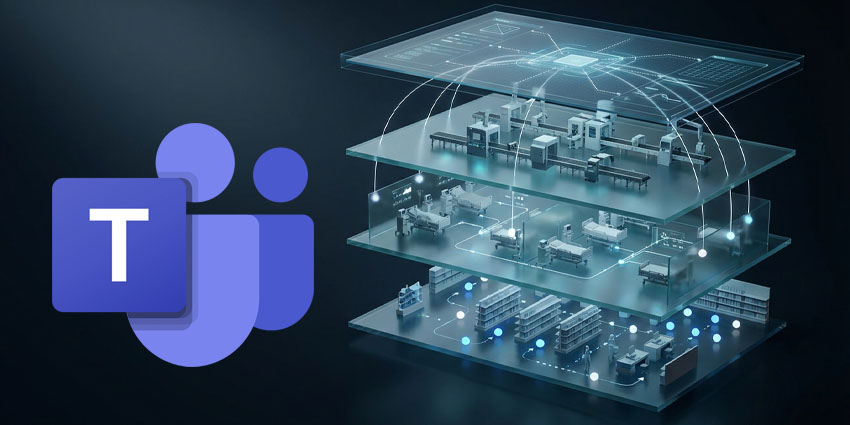Demand for focus space technology is increasing as organizations restructure their environments for the future of work. Even before the pandemic changed how we worked forever, companies were already exploring new strategies for office design.
As communication and collaboration evolved, business leaders began experimenting with open office designs, collaborative spaces, and even huddle rooms. However, the rise of the remote and hybrid workforce placed increased focus on the importance of focus spaces for productivity.
After discovering the benefits of quiet “single person” office spaces at home, employees have learned that different types of work require specific environments. Focus spaces, ideal for eliminating distraction and empowering more efficient individual and collaborative workflows, are now essential to the modern office. The question is, what kind of technology do you need to build a focus space?
Focus Space Technology: What Businesses Need in 2024
To choose the right focus space technology, business leaders must first understand what the “office focus space” actually is. Broadly, focus spaces are designed rooms or spaces in a business environment intended to facilitate concentration. They can come in many shapes and sizes, such as hybrid meeting rooms with collaborative tools like video systems and whiteboards.
They can also include specific spaces designed for certain types of work, like phone booths or pods for private conversations, quiet rooms for individual work, or zones in an office neighborhood.
The focus space technology you’ll need for your workplace depends on the type of work your team members do each day. In most cases, business leaders must invest in various “spaces” to suit their diverse employee personas.
Some critical pieces of focus space technology to consider include:
1. Secure Wi-Fi Systems and Connectivity
The first focus space technology every business will need to consider is connectivity in the workplace. Every type of employee needs consistent access to a range of cloud-based apps and systems, from CCaaS solutions to unified communication and collaboration tools.
Strong routers offering secure Wi-Fi and other connectivity options will ensure team members can always remain linked to the internet. Depending on the nature of your office, you might invest in a private networking solution offering ultra-fast Wi-Fi and plenty of bandwidth.
Investing in mobile connectivity solutions may also be helpful, offering 5G connections with minimal latency to users moving around the office. Whatever your connectivity choices include, ensuring they’re protected from data breaches and leaks is crucial. Look for VPNs, network activity monitors, antivirus software, and firewalls.
2. Focus Space Technology Collaboration Software
Focus space technology doesn’t have to concentrate exclusively on individual work. Though some team members will use focus spaces to “disconnect” from other team members when working on complex tasks, they may still need to interact with their colleagues, both in and outside the office. Additionally, some focus spaces may need to enable collaborative work.
Hybrid meeting rooms and huddle spaces are still a form of “focus space.” “Companies need the proper hardware and software to empower collaborative teams. For many businesses, starting with the software and then looking for compatible hardware is a good idea.
For instance, you might choose Microsoft Teams and Microsoft Teams Rooms for collaboration and build your focus room technology stack with solutions certified for Teams. While the key features of your collaboration software will vary depending on your workforce, it should always include:
- Multiple communication methods: Direct and group messaging, video and audio conferencing, calling for external devices, and asynchronous messaging threads.
- Screen and file sharing: Tools for sharing valuable content and resources throughout the team, with built-in security measures.
- Creativity tools: Whiteboarding solutions and documents teams can work on in real-time over the cloud.
- Administrative controls: Meeting host tools and access controls to provide specific staff members with certain resources.
- Integrations: Access to integrations for calendars, recording tools, transcription services, and even meeting room booking technology.
3. Audio Masking and Sound Proofing Technology
Although the design of focus rooms in an office environment can vary, all of these environments are designed to minimize distractions. Sound masking technology is crucial for ensuring employees in a focus room can work without being disrupted by external noises and conversations.
At the same time, sound masking solutions can prevent noise from leaking out of a focus space into the surrounding area. This reduces distractions for other employees and helps to ensure confidential conversations remain private.
Various AV bars and speaker systems already include built-in audio masking technology. For instance, the HDL300 system consists of a solution that ensures only human voices are captured and recorded instead of external noises.
Depending on the design of your office, you may need to consider more advanced systems to accompany your soundproofing solutions (screens, walls, and dividers). These solutions can match the frequencies of sound waves in focus zones to control the audio ambiance of a room.
4. Speakers, Microphones, and Headsets
Speaking of crucial audio systems, speakers, microphones, and headsets are common focus space technology kit components. If your team members need to communicate with remote and hybrid workers, colleagues, and external contacts, they need these tools.
The audio technology you use will depend on the nature and purpose of your focus rooms. Some companies will use desk phones and headsets with noise-canceling microphones to create calling pods and focus desks. Others will use comprehensive speakerphones and microphones with “mist” technology to enable meeting room environments.
When choosing audio-focused focus space technology, it’s worth looking for noise-cancelling capabilities to minimize distractions. Microphones should be able to distinguish between human voices and other noises. Speakers should deliver exceptional clarity at any volume without background noise.
5. Cameras and Displays for Video Conferencing
Video has become an essential component of the modern workforce. Used for hybrid meetings, customer service, and even webinars, events, and training, video may be necessary to your meeting room technology stack. Once again, the nature of your focus rooms will influence the type of technology you buy. Webcams with high-definition streaming capabilities may be the best option for individual focus desks and pods.
For smaller hybrid meeting rooms and huddle rooms, you may choose a multi-camera system or a single camera with a wider field of view to help capture all of your employees at once. Some solutions even have built-in AI technology to focus on different speakers or automatically zoom in on employees throughout the room.
One common option today is investing in “focus room technology kits” or meeting room kits. These come with all the tools needed to transform a space into a meeting room. This might include plug-and-play video bars with microphones and speakers, digital whiteboards, and displays.
Usually, these kits are designed for flexibility, ensuring employees can create a meeting room environment in minutes without having to access setup and technical support.
6. Meeting Room Booking and Management Software
When investing in focus room technology, thinking about how you’ll manage your teams, assets, and resources is essential. Different employees must be able to access specific parts of your office at different times. This is where room management software comes in.
Room management software and booking solutions allow employees to request access to specific spaces and resources at certain times of the day. It helps to minimize the risk of too many employees fighting over the same space in your office.
Most of these applications and systems should be able to integrate with the tools you’re already using for workforce management, scheduling, and even collaboration. They should also be able to work on the hardware you’re using around the office. For instance, you might invest in digital signage and display systems that show when a room is available or booked.
7. Innovative Focus Room Technology
Alongside the essentials above, many businesses will benefit from exploring some “next-generation” focus room technology. For instance, if you’re leveraging artificial intelligence to improve productivity and efficiency in the office, you might look for headsets and speaker systems that come with their own AI virtual assistant.
You may invest in AI solutions like Copilot, which can help record and transcribe meetings or summarize conversations. Another option is to look into the world of immersive collaboration. Extended reality solutions like mixed, virtual, or augmented reality headsets and applications can help take collaborative sessions to the next level.
For instance, companies like Microsoft have created “Immersive Spaces” where employees can immerse themselves in digital environments for collaborative work. These applications come with spatial audio systems that help to create “zones” in virtual environments to minimize the risk of distractions from overlapping conversations.
8. Other Possible Focus Room Technology Essentials
Finally, it’s worth considering the other “tech essentials” your employees will need to work as efficiently and productively as possible in their focus spaces. The extra accessories you invest in will depend on the employee personas in your office. However, some common options include:
- Scanners, printers, and photocopiers: Crucial tools for collecting and sharing documents in the office and creating physical copies of files.
- Cables and chargers: Extra charging stations for wireless headsets, extended reality devices, tablets, laptops, and even smartphones.
- Computer systems: Computers, laptops, and networked displays are crucial for both individual and collaborative work in the modern office.
If you’re unsure what crucial accessories your employees need, it’s worth asking them about the resources they use daily for individual and collaborative work. Feedback from your teams can help you build a more engaging and functional “focus space” to suit every need.
Choosing the Right Focus Space Technology in 2024
Focus space technology might not be an entirely new concept in office design, but it’s growing increasingly crucial in the modern world. The proper focus space technology doesn’t just improve productivity in the workplace by helping teams concentrate on specific tasks.
Your tech stack can also be an essential resource for encouraging employees to re-enter the office as part of a “return to office” mandate. Employees keen to retain flexibility will be more likely to return to the office if they know they can access the spaces needed to stay productive.
Additionally, the proper focus space tech could even help to minimize stress and improve wellbeing in the office. Around 41% of workers say that focus spaces help them reduce feeling overwhelmed and stressed. Ensure you’re investing in the right technology for your business focus spaces.







